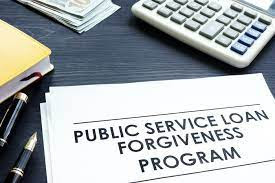What Is The Public Service Loan Forgiveness Program?
Navigating the Path to Student Loan Relief through Public Service
The burden of student loan debt can be overwhelming for many individuals pursuing higher education. Recognizing the financial strain it can cause, the U.S. government introduced the Public Service Loan Forgiveness (PSLF) program to alleviate some of the burden for those working in public service careers. This article aims to provide a comprehensive overview of the Public Service Loan Forgiveness program, its eligibility criteria, application process, and benefits.
- Understanding the Public Service Loan Forgiveness Program:
The Public Service Loan Forgiveness program was established by the U.S. Congress in 2007 under the College Cost Reduction and Access Act. Its purpose is to offer student loan forgiveness to borrowers who commit to working full-time in a qualifying public service job while making consistent payments on their federal student loans for a period of 120 months (equivalent to 10 years).
- Eligibility for the Public Service Loan Forgiveness Program:
To qualify for the Public Service Loan Forgiveness program, borrowers must meet specific criteria:
a. Employment: Applicants must be employed full-time by a qualifying public service organization, including government agencies (federal, state, local), non-profit organizations (501(c)(3) status), or other qualifying non-profit organizations.
b. Loan Type: Only Federal Direct Loans are eligible for forgiveness under the PSLF program. Borrowers with other types of federal loans may consolidate them into a Direct Consolidation Loan to become eligible.
c. Repayment Plan: Borrowers must be enrolled in an income-driven repayment plan, such as Income-Based Repayment (IBR), Pay As You Earn (PAYE), or Revised Pay As You Earn (REPAYE). These plans typically base monthly payments on a percentage of the borrower's discretionary income.
- The Application Process:
To apply for Public Service Loan Forgiveness, borrowers must complete and submit the Employment Certification Form annually or when changing employers. This form verifies employment in a qualifying public service job and ensures the borrower is on track for loan forgiveness. After making 120 qualifying payments, borrowers can submit the PSLF application to receive loan forgiveness.
- Benefits of the Public Service Loan Forgiveness Program:
The Public Service Loan Forgiveness program offers significant benefits to eligible borrowers:
a. Loan Forgiveness: Upon completing 120 qualifying payments while working in a qualifying public service job, borrowers may be eligible for complete loan forgiveness.
b. Potential Tax Exemption: Loan forgiveness through the PSLF program is not considered taxable income, providing further relief to borrowers.
c. Repayment Flexibility: Income-driven repayment plans allow borrowers to make affordable monthly payments based on their income, easing the financial burden.
d. Career Opportunities: The PSLF program encourages individuals to pursue careers in public service, including education, healthcare, law enforcement, and non-profit sectors, thereby promoting societal development.
Conclusion:
The Public Service Loan Forgiveness program offers a path to significant student loan relief for individuals working in qualifying public service careers. By fulfilling the eligibility requirements and making consistent payments for 10 years, borrowers can alleviate the burden of student loan debt. However, it is crucial to stay informed and submit the necessary documentation to ensure a successful application. For more detailed information on the program and updates, visit the official Federal Student Aid website.
External Link: Federal Student Aid - Public Service Loan Forgiveness Program




Post a Comment
0 Comments